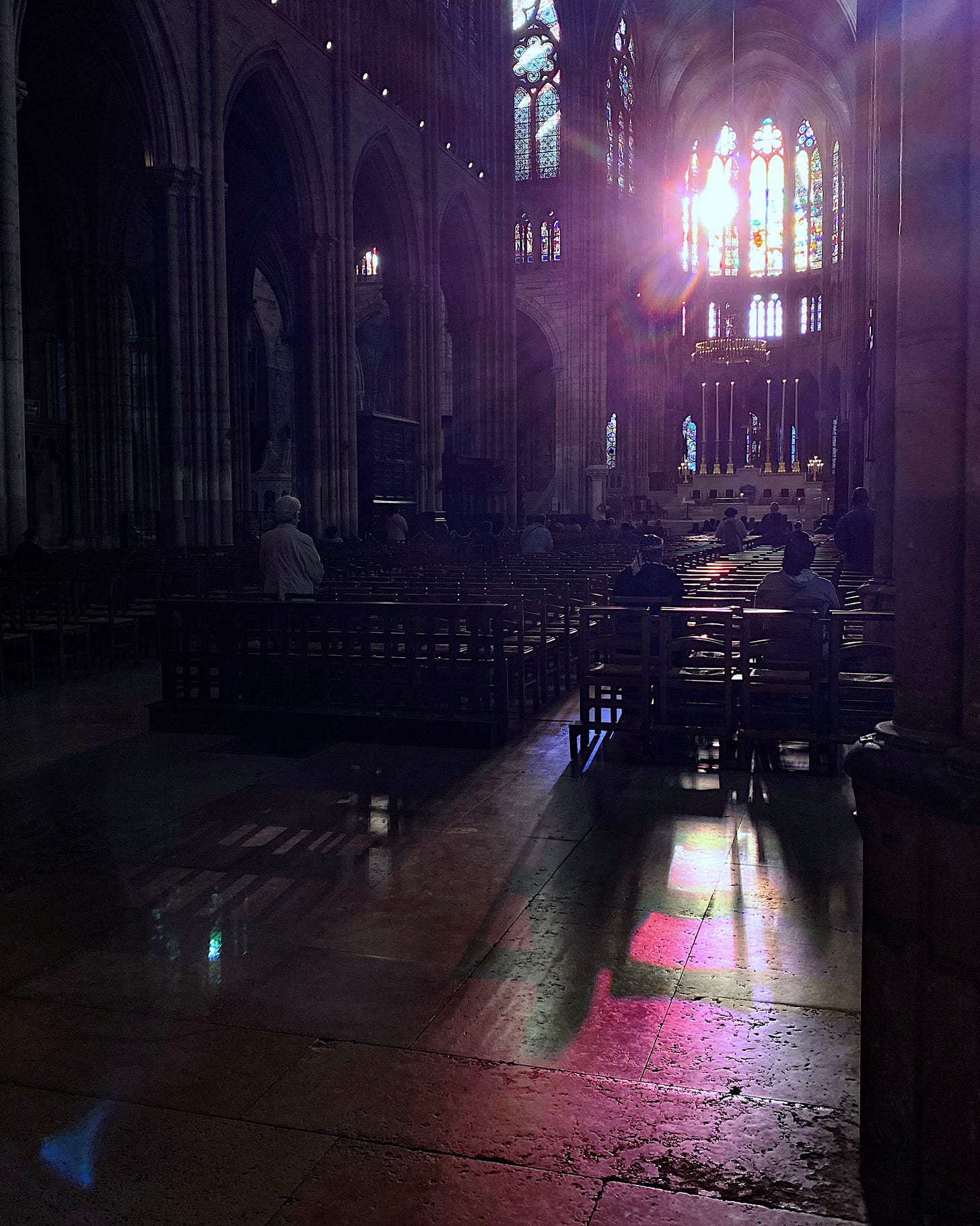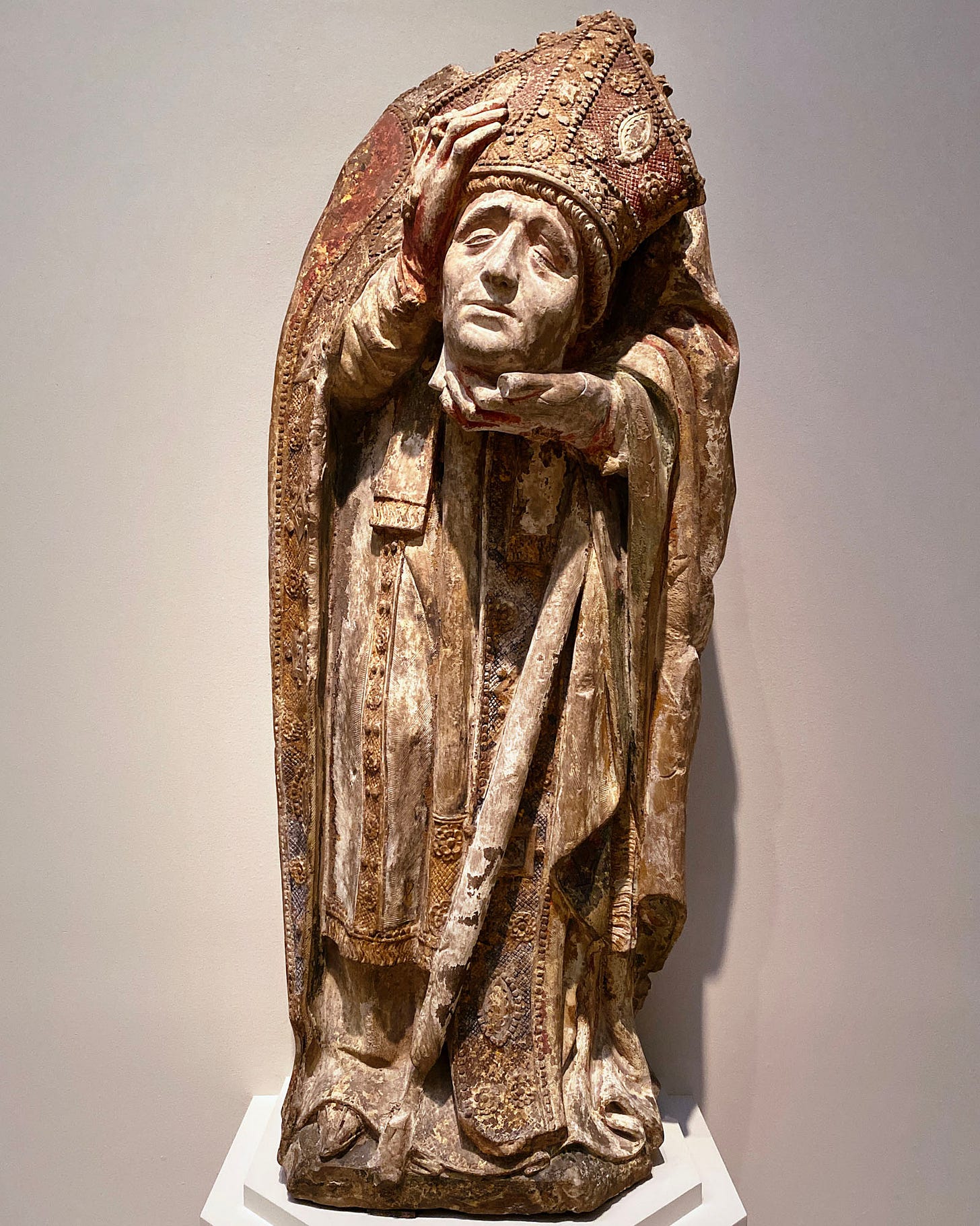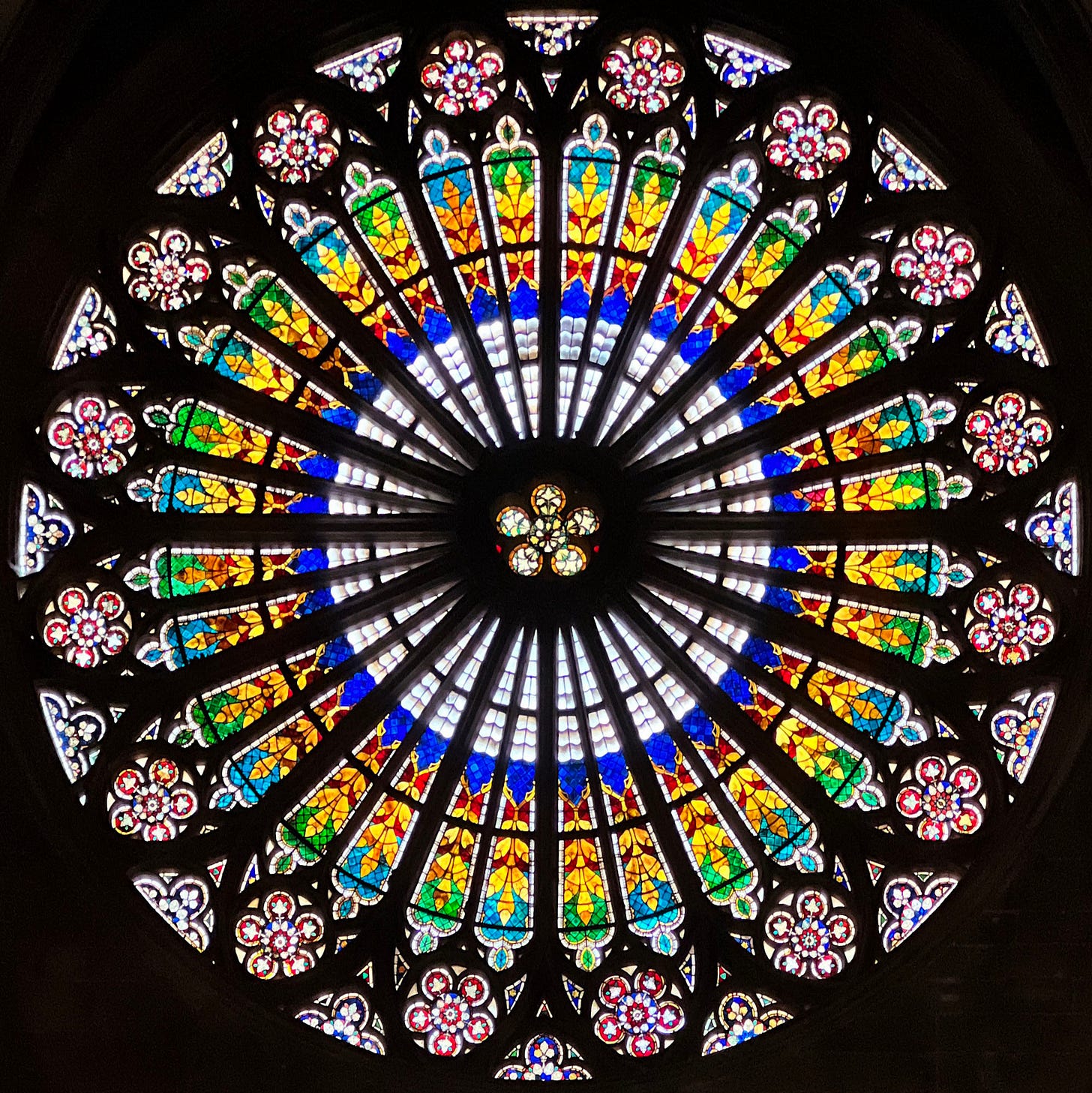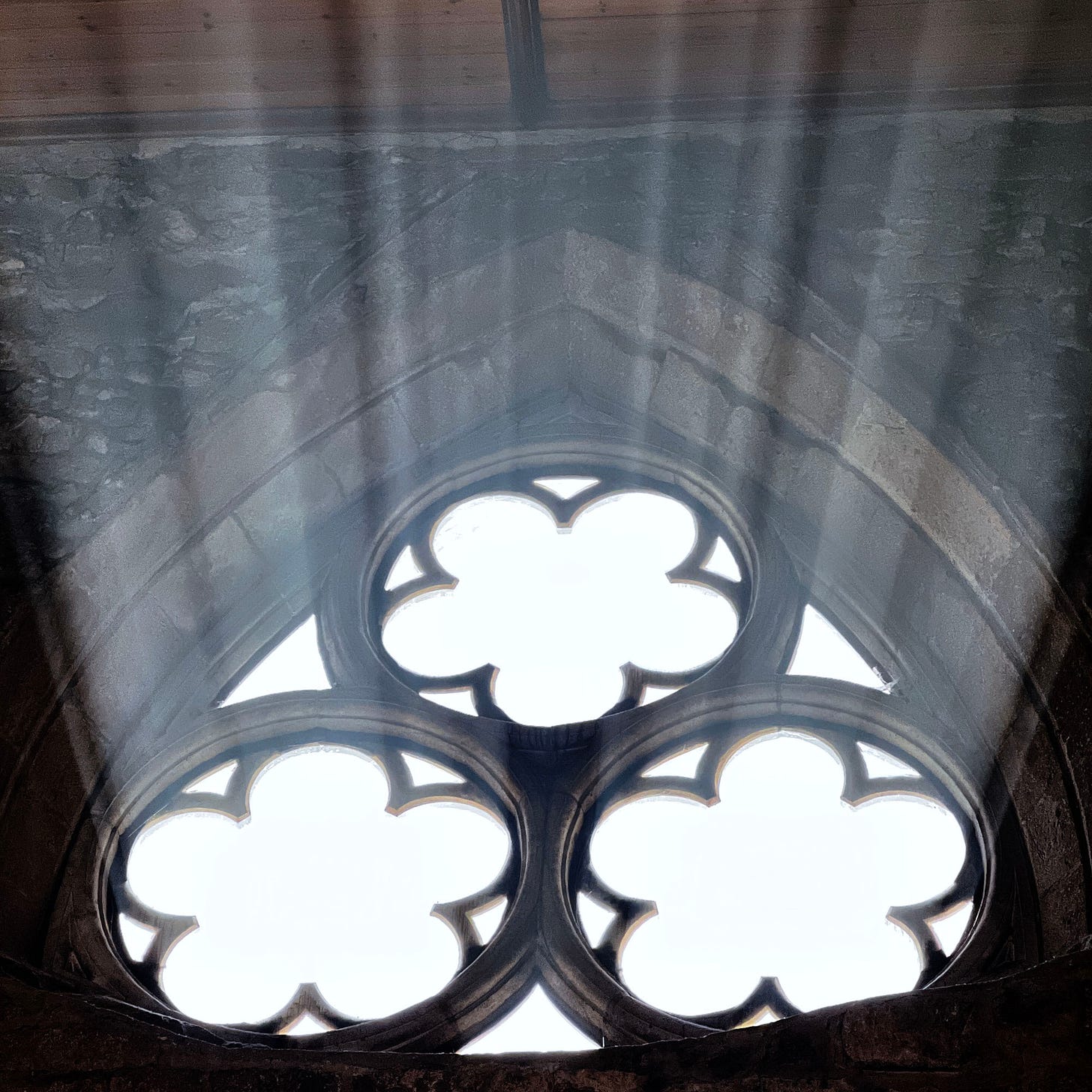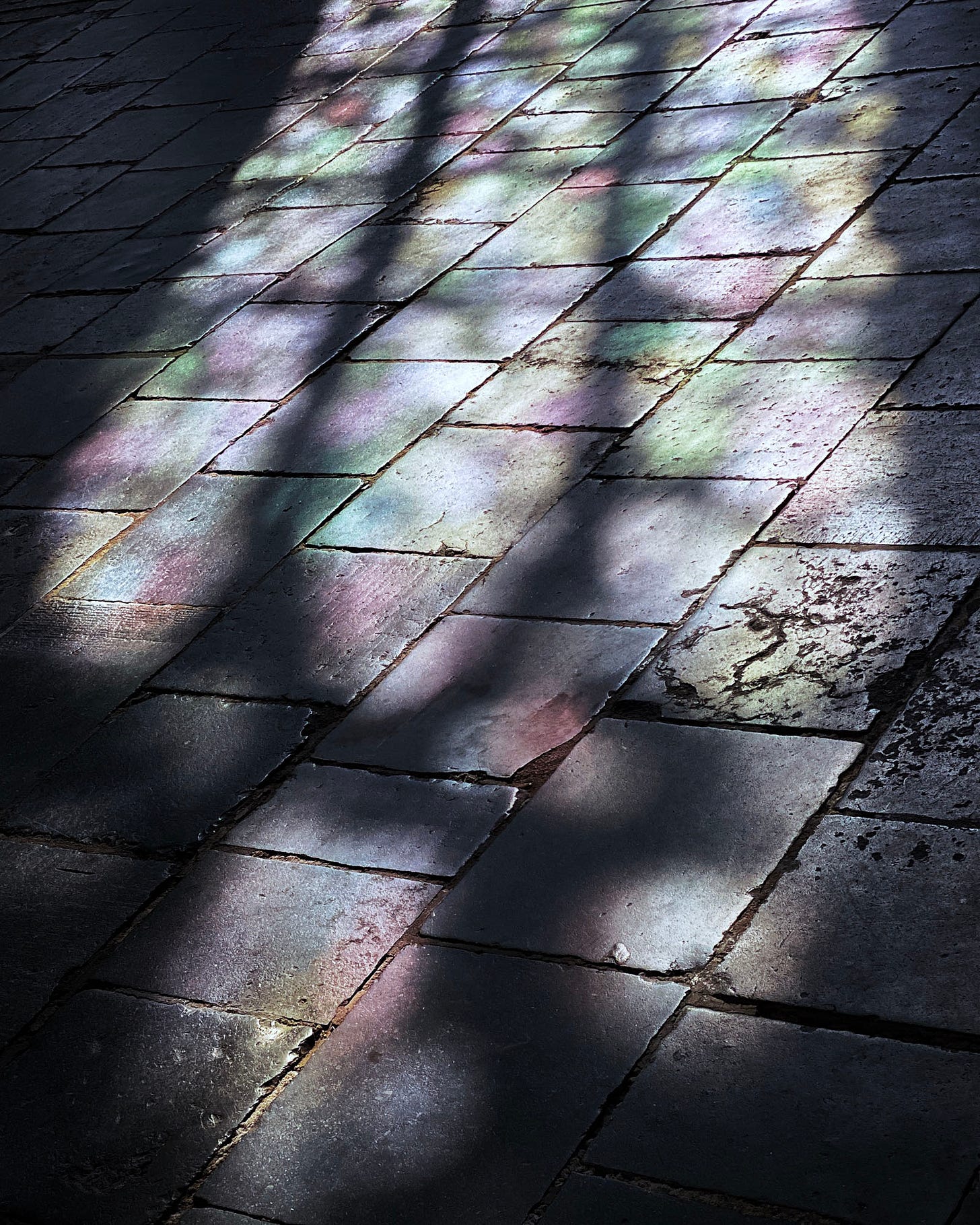The Mystical Roots of Gothic Architecture
How Greek Philosophy Inspired Medieval Builders
(10 min read) Gothic architecture was an attempt to manifest the Neoplatonic vision of a cosmos illuminated by divine light, where the material structure of the cathedral served as a gateway to higher, spiritual realities.
“Thus, when — out of my delight in the beauty of the house of God — the loveliness of the many-colored gems has called me away from external cares, and worthy meditation has induced me to reflect, transferring that which is material to that which is immaterial, on the diversity of the sacred virtues: then it seems to me that I see myself dwelling, as it were, in some strange region of the universe which neither exists entirely in the slime of the earth nor entirely in the purity of Heaven; and that, by the grace of God, I can be transported from this inferior to that higher world in an anagogical manner.” — Abbot Suger*
Abbot Suger, generally recognized as the “inventor” of Gothic architecture (see this post), knew that his basilica was built on the tomb of St-Denis, the Pauline convert who wrote On the Celestial Hierarchy and several other early Christian mystical texts.
Suger certainly studied these writings closely, and there can be little doubt that they helped him conceptualize the mystic experience he describes in the above quote. It’s also easy to imagine that it was just such a vision that led him to rebuild the eastern end of his basilica — the first work of Gothic architecture — in such a way that it would feel as if one were standing inside the jewel-encrusted reliquary that was the object of his meditation in the quote above.
“With the expression ‘lux continua’ Suger uttered the decisive principle.” — Paul Frankl, “The Gothic”**
Gothic architecture was often described by contemporaries as an attempt to express the idea of “Heavenly Jerusalem on Earth.” It was also well understood that the key to this expression is the idea of divine light pouring through stained glass windows and illuminating soaring open spaces with an ethereal glow.
What’s less well-known is that the roots of these ideas come from the “pagan” Greek philosophy of Neoplatonism. Because it turns out that that Abbot Suger — along with all medieval European scholars — was suffering from a misunderstanding about who exactly wrote those mystical texts, conflating three different historical persons into a single legendary character. (In a sense, this was a “Trinitarian” error, lol.)
This mistake on Suger’s part gives me an excuse to discuss ancient Greek philosophy and mysticism, which is one of my favorite subjects — especially when I can draw a line between it and Gothic architecture, another favorite subject. But first, let’s sort out the medieval misunderstanding about who was who.
Dionysius the Areopagite, Pseudo-Dionysius, and Saint Denis
The first historical person in this group was Dionysius the Areopagite. He was mentioned in the Acts of the Apostles (17:34) as being converted by St Paul while the latter was in Athens; this Dionysius then became Athens’ first bishop.
Some 450 years later, c500AD, a Neoplatonic philosopher and Christian theologian wrote a series of treatises and letters expounding a mystical vision of Christianity with a pronounced Neoplatonic influence. His work was incorrectly attributed to Dionysius the Areopagite, though this was not discovered until the late 15th century and not widely accepted until perhaps the 17th century. This author is now known as Pseudo-Dionysius.
To confuse things even further, there was a 3rd century martyr name Denis (the French name for the Latin Dionysius), who was bishop of Paris. He was decapitated on the highest hill in Paris, now known as Montmartre. After his decapitation, he picked up his head and walked all the way to where the Basilica of St-Denis now stands before finally laying down to a final rest. Such a feat led to canonization, of course; Saint Denis was widely loved for his intercessory abilities in the Middle Ages. And for whatever reason — despite separated by two centuries and 2000 kilometers — this Parisian St-Denis had by the 9th century became confounded with the Athenian Dionysius.
Thus, by the time the 12th century rolled around and Suger was Abbot of St-Denis, he firmly believed that the saint buried in his basilica’s crypt was the writer of certain mystical texts that actually propound a mysticism based on the principles of Plato more than the Bible.
It is at this point that we can turn to the philosophy called Neoplatonism, which had a widespread influence throughout the Middle Ages — and not exclusively through the writings of Pseudo-Dionysius. St Augustine, for example, is the most famous of many early Church Fathers who were influenced by Neoplatonism.

Neoplatonism
Among the non-Christian Neoplatonists, two figures stand out for our story: Plotinus and Proclus. Plotinus (c205-270 AD) is considered the founder of the school, and Proclus (412-485 AD) was an important Neoplatonic thinker who was the head of Plato’s Academy and who likely taught Pseudo-Dionysius.
Neoplatonism is a vast and potentially confusing topic, so what follows is a massive simplification, as well as a bit of a personal interpretation.
Plotinus & The One
From his extensive interpretations of Plato, Plotinus developed the idea that there were ultimately three underlying metaphysical principles to reality, and that through their activity, the universe we perceive is created. These he called the One, the Intellect, and the Soul. Note that while this tripartite division shares at least a numerical similarity with the idea of the Trinity in Christianity (and that numerical similarity may have been attractive to early Christian thinkers), it is a very different idea. Let’s look at these terms one by one.
The One is the absolute first principle, self-caused and the cause of all other being. It is ineffable — beyond all conceptions — and to even give it a name is in a sense misleading, though “the One” is perhaps the least inappropriate word to use.
On the other hand, a few other terms have been used in other cultural contexts, because this idea is ultimately the notion behind the perennial philosophy that “all is one” or “everything is connected.” Also called nondualism in modern philosophy, it has been called “the Tao” in Chinese philosophy, “Brahman” in Indian Advaita Vedanta, and “the ground of being” by Meister Eckhart and Paul Tillich (and these last examples take us into Christian mysticism form the 14th to 20th centuries).
In Neoplatonic philosophy, everything emanates from the One. Intellect emanates from the One, the Soul emanates from the Intellect, and the Soul’s activity creates the material world, which is the most “degraded” form of reality. (This notion of our living in a degraded reality was of course easily accepted by early and medieval Christians.)
Explaining how all this happens is beyond the scope of this article, and in a sense unimportant — what is important is that you understand the concept of a series of “emanations” leading in stages from some ultimate, nondual and inexpressible, first principle to the universe you inhabit.
It’s also important to understand that these emanations are not temporal, either: it’s not as if there is One, and then later there is Intellect, and later Soul, and then the material world. Rather this is a continual process always happening: thus later Christian mystical traditions speak of “the ground of being.”
In short, Plotinus's concept of the One represents the ultimate source of all reality, with everything in the universe existing as an emanation from this singular, ineffable principle. This idea of a divine source influencing our world became foundational for later mystical and theological thought, including the medieval Christian context.
Proclus & Pseudo-Dionysius
Despite my statement that how these emanations from the One create the observable universe is unimportant, philosophers are going to philosophize. And to philosophize often means to elaborate.
Proclus, for example, suggested that a series of “henads,” or unities/gods bridge the gap between from the One to the “ten thousand things” (as the Taoists liked to call the observable world). This basic idea leads to the “great chain of being,” a hierarchical organization which was a staple of much medieval philosophical and theological thinking.
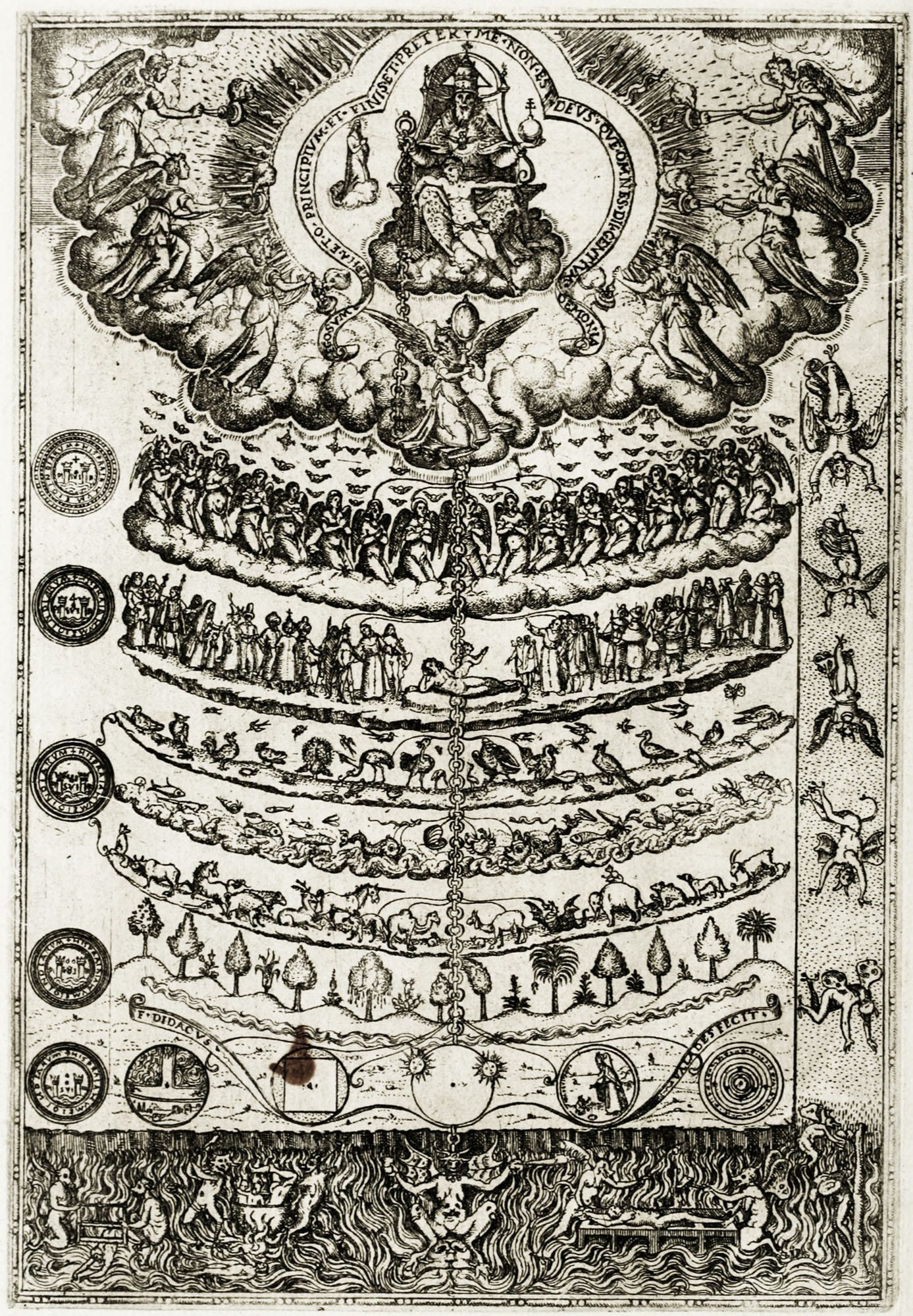
This is where Pseudo-Dionysius comes in. In his works, but especially in “On the Celestial Hierarchies” and “On the Ecclesiastical Hierarchies,” he overlays a Christian interpretation onto the idea of henads connecting the different levels of reality, using Biblical texts and liturgical practices as his organizing principles.
This results in a very complex but highly ordered scheme of multiple hierarchies of celestial beings and earthly practices. Perhaps the most well-known of these hierarchies is the nine orders of spiritual beings below God, of which the archangels and angels — the only angels that might possibly be experienced by humans — are at the bottom.
Pseudo-Dionysuis’ hierarchies, both spiritual (“Celestial”) and worldly (“Ecclesiastical”) had an important influence on how the Church organized itself and on how those who wanted to experience a closer union with God would go about doing so, as well as how they would conceptualize their mystical experiences.
Divine Light
As I mentioned above, cultures throughout the world have developed similar ideas about a single “godhead” as the ultimate reality. It is indeed — as Aldous Huxley popularized the phrase in the mid-20th century — the “perennial philosophy.”
Scholars of comparative religion often describe different schools of mysticism as all aiming at the top of the same mountain, but starting at different points below. So, depending on the exact time and place and cultural milieu, followers of Greek Neoplatonism, Chinese Taoism, Islamic Sufism, Indian Advaita all begin with different symbols and descriptions at their base, but those descriptions and symbols become more and more similar as one ascends to a mystical realization.
And the most common symbol they all arrive as they approach the ultimate source is divine light. Medieval scholar Johan Huizanga put it well in his classic The Waning of the Middle Ages:
“Mystics, it has been said, have neither birthday nor native land. But the support of imagination cannot be given up all at once. The insufficiency of all modes of expression is gradually accepted. First the brilliant imagery of symbolism is abandoned, and the too concrete formulas of dogma are avoided. But still the contemplation of the absolute Being ever remains linked up with notions of extension or of light….
Of course, these successive stages in the abandoning of imagery have not actually followed in strict chronological order. All had been reached already by Denis the Areopagite.” ***
And so Huizanga leads us back, as if we were ourselves returning to the One, to Abbot Suger’s quote which opened this essay. The play of light — whether from the candlelight reflecting off the jewels of a reliquary as in Suger’s meditation, or through your own experience today of the multicolored stained glass of the high windows in a soaring Gothic Cathedral — can lift one’s mind up from the muck of the everyday world to contemplate higher powers and purposes.
In essence, Gothic architecture can be seen as an attempt to manifest the Neoplatonic vision of a cosmos illuminated by divine light, where the material structure of the cathedral serves as a gateway to higher, spiritual realities. By channeling light through soaring spaces and vibrant stained glass, Gothic cathedrals aimed to evoke this mystical ascent, guiding worshippers toward a deeper communion with the divine.
I will soon be posting a multi-part essay entitled “The Evolution of Gothic Architecture.” In it, we will see more specifically how medieval builders and artisans went about achieving this aim, across several centuries and many different cultural regions of Europe.
References
*— Abbot Suger quote from Frankl, p19
**— Frankl, p11-12
***— Huizinga, p201
Frankl, Paul. The Gothic: Literary Sources and Interpretations through Eight Centuries. 1960.
Huizinga, Johan. The Waning of the Middle Ages. 1919; 1924 translation by Edward Arnold & Co.
Suggested Reading
Hadon, Pierre. Plotinus, Or the Simplicity of Vision. 1963.
Hines, Brian. Return to the One: Plotinus’ Guide to God-Realization. 2009.




